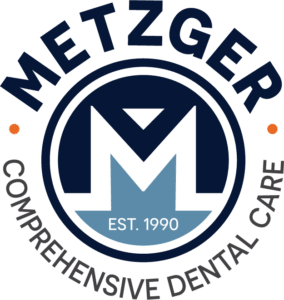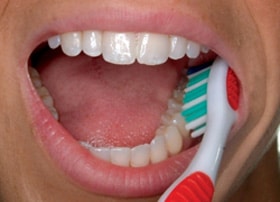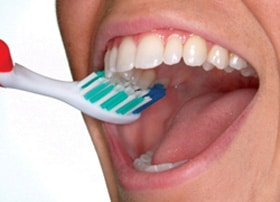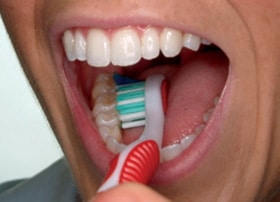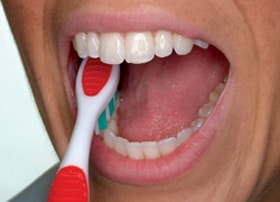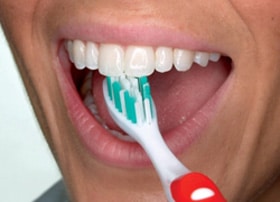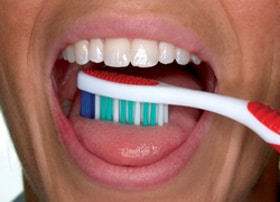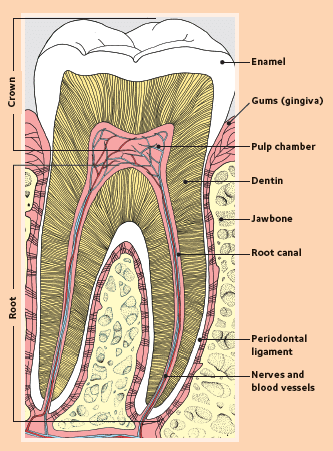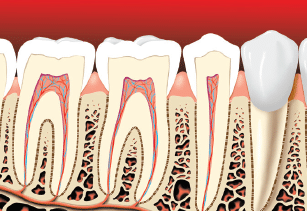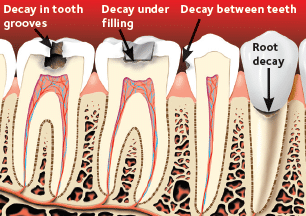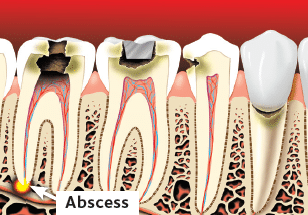Dental Hygiene
 It all starts here! Take care of your beautiful smile and prevent future oral problems with regular visits for your dental cleaning and exam.
It all starts here! Take care of your beautiful smile and prevent future oral problems with regular visits for your dental cleaning and exam.
Your mouth is the window into the health of your body. So taking care of your teeth and gums isn’t just about preventing cavities and bad breath. It’s about maintaining a healthy mouth to maintain a healthy body. Routine cleanings help rid the mouth of harmful bacteria and promote a lifetime of good oral health.
What to Expect
During your appointment, our Dental Hygienist and Dentist will conduct a thorough cleaning and oral exam. Here is what you can expect:
- A review of your dental and medical history
- A conversation about any concerns you have regarding your teeth, mouth, or overall oral health
- An oral exam, including a visual gum tissue check and visual oral cancer screening
- Cleaning to remove plaque and tartar that has built up above and at your gum line
- Digital X-Rays (bite wings and panoramic), which are imperative for early detection of decay, oral pathology, and tooth development issues.
Your dental progress will be reviewed by Dr. Keith Metzger or Dr. Kyle Metzger, which will allow them to develop a customized treatment plan uniquely tailored for your needs.
Still Curious?
What are some tips for brushing teeth properly?
Brush twice a day for two minutes each time with a fluoride toothpaste to help prevent tooth decay. Fluoride (FLOOR-ide) is a mineral that helps make tooth enamel stronger. It’s a good idea to talk with your dentist or hygienist about the best way to brush your teeth. Here are a few tips to help you start a good routine:
Patient education content ©2020 American Dental Association. All rights reserved. “ADA” and the “ADA” Logo are registered trademarks of the American Dental Association.
Why do I need to clean between my teeth?
Even if you brush twice a day, there are places your toothbrush bristles can’t reach. There are several ways to clean between your teeth and flossing is the most common. Flossing removes plaque and food particles from between teeth and under the gum line. Your dentist or hygienist can show you the right way to floss. It may feel clumsy at first, but don’t give up! It takes time to get the hang of it.
The following suggestions may help:
If you haven’t been flossing, you may experience sore or bleeding gums for the first five or so days that you floss. This should stop once the plaque is broken up and the bacteria are removed. If bleeding does not stop, see your dentist.
If you have trouble handling floss, you may wish to try some other ways to clean between your teeth. There are a number of products, known as interdental cleaners that you can use. These include water flossers, pre-threaded flossers, tiny brushes and wooden plaque removers. Talk with your dentist or hygienist about which product may be most helpful to you.
Patient education content ©2020 American Dental Association. All rights reserved. “ADA” and the “ADA” Logo are registered trademarks of the American Dental Association.
Easy Steps for Flossing
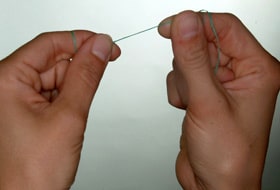
1. Break off about 18 inches of floss and wind most of it around your middle or index finger. Wind the rest of the floss around a finger of the other hand. This finger will take up the used floss.
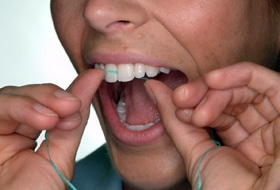
2. Hold the floss tightly between your thumbs and forefingers. Guide the floss between your teeth, using a gentle rubbing motion. To avoid hurting your gums, never snap the floss into gum tissue.
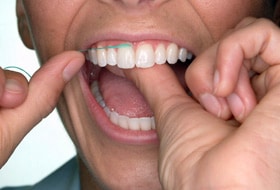
2. When the floss reaches the gum line, curve it into a C shape against one tooth. Gently slide it into the space between the gum and the tooth
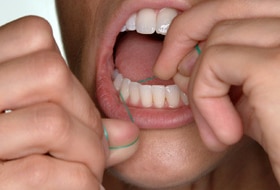
4. Hold the floss tightly against the tooth. Gently rub the side of the tooth, moving the floss away from the gum with up and down motions.
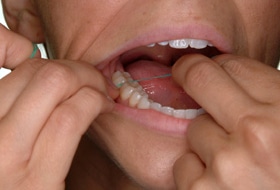
5. Repeat this method on the rest of your teeth. As you move from tooth to tooth, unwind the clean floss with one finger and take up the used floss with the finger on the other hand. Do not forget the back side of the last tooth.
Patient education content ©2020 American Dental Association. All rights reserved. “ADA” and the “ADA” Logo are registered trademarks of the American Dental Association.
Tooth Decay is a Disease that Damages and Breaks Down Teeth
Your teeth have a hard, outer layer (enamel), a middle layer (dentin) and a center (pulp).
What Causes Tooth Decay?
Your teeth are covered by a sticky film of bacteria called plaque. After a meal or snack, the bacteria turn the sugars in foods and drinks into acid. The acid breaks down the enamel of your tooth. If the decay gets through the enamel, a hole, or a cavity, can form. Once the cavity forms in the enamel, it can continue to spread deeper into the layers of your tooth.
If tooth decay is not treated, you may feel pain, the infection can spread to other parts of your mouth, and you may even lose teeth. People with tooth pain often have trouble eating and sleeping and may miss days of work or school.
Patient education content ©2020 American Dental Association. All rights reserved. “ADA” and the “ADA” Logo are registered trademarks of the American Dental Association.
There's no better time to get started.
Call (817) 428-1800 or click below to schedule your appointment today.
What Our Patients Have to Say
Read more reviews from thousands of our happy patients
1213 Hall Johnson Road, Suite 100, Colleyville, TX 76034
| Monday - Wednesday | 8:00 AM — 5:00 PM |
| Thursday | 8:00 AM — 4:00 PM |
| Friday - Sunday | Closed |
We are closed for lunch from 1 PM – 2 PM.
